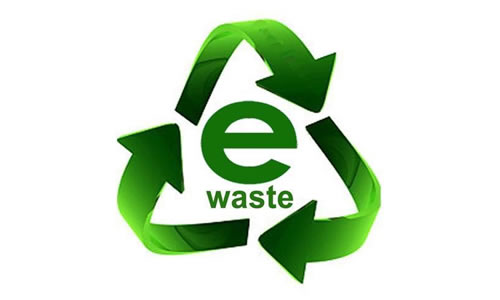Overview of E-waste Export
E-waste or electronic waste refers to abandoned electronic items such as computers, information and communication technology equipment, audio and video products, and so on. E-waste has increased dramatically in India as the IT sector has increased the use of electronic devices.
E-waste contains a variety of elements, including heavy metals, precious metals, and polymers, which can be poisonous and harmful to the environment, as well as causing harm to individuals, if not treated or managed properly. E-Waste is primarily composed of metals, plastics, and glass, which when recycled yield valuable metals such as copper, iron, tin, lead, zinc, silver, and gold. Furthermore, the printed circuit boards contain rare and precious metals such as ruthenium, rhodium, palladium, ruthenium, and others.
To export e-waste, you must first acquire approval from the MoEF, which stands for the Ministry of Environment and Forest, and the SPCB, which refers for the State Government’s State Pollution Control Board. The Ministry of Environment and Forest is the sole entity in charge of approving the export of e-waste from India.
E-Waste Management System in India
The Environment and Forests Hazardous Wastes (Management and Handling) Regulations, 2008 govern India’s e-waste management system. The E-waste (Management and Handling) Rules, 2010 were also enacted to ensure the safe and environmentally friendly collection, segregation, dismantling, storing, recycling, transporting, and recycling of e-waste, as well as to reduce the use of hazardous substances during the manufacturing of electrical and electronic equipment.
E-waste Management Law Enforcement Agencies
The following are the Enforcement Agencies in India involved in E-waste Management:
- Ministry of Environment and Forests, Government of India.
- Port Authorities and Customs Authorities under the Customs Act, 1962.
- Directorate General of Foreign Trade.
- State Pollution Control Boards (SPCB).
- Central Pollution Control Board (CPCB).
Eligibility Requirements for an E-Waste Export License
The following are required for the MoEF to grant permission or licence as specified in Schedule I –
- Mass Quantity Consumer of Electronic Devices
- E-Waste Manufacturer
- E-Waste Dismantler
- E-Waste Producer
- E-Waste Collection Organisations
E-Waste Export Eligibility List
The following waste are eligible for export:
- Metal and metal alloy wastes in metallic, non-dispersible kind
- Antimony, Cadmium, Leads, and Tellurium alloys are found in metal and metal-bearing waste.
- Contaminants in waste include antimony compounds, cadmium compounds, lead compounds, and tellurium compounds.
- Metal carbonyls are waste.
- Sludge from galvanic activity.
- Wastes Liquors from metal pickling.
- Leaching wastes from zinc processing, dust and sludges including jarosite, hematite, and other minerals.
- Zinc waste residues
- Electrical and electronic assemblies are considered waste or scrap.
- Wastes are primarily composed of inorganic ingredients, but they may also contain metals and organic materials.
- Clean, uncontaminated metal scrap in bulk finished form, including alloys (sheet, plates, beams, rods etc.) scrap antimony – Beryllium waste – Cadmium waste – Lead waste (excluding lead-acid batteries) – Selenium scrap – Tellurium scrap.
- Metal and metal alloy waste containing molybdenum, tungsten, titanium, niobium, tantalum, and rhenium (metal powder).
- Nonferrous metal heavy fraction scrap containing cadmium, antimony, lead, and tellurium.
- Solids containing precious metal residues with traces of inorganic cyanides.
- Non-dispersible waste from mining activities.
- Glass waste that is not dispersible.
- Sludge containing calcium fluoride.
- Multifunction printing and copying equipment were used.
Documents for E-Waste Export
The following documents are required for the issue of an E-Waste Exportation License –
- MoEF Approval Certificate / License for E-Waste Export
- NOC from MoEF
- SPCB’s Consent Letter
Issue of an Export License for E-Waste
The following process needs to be followed:
- Anyone out there planning to export e-waste should make an application to the Ministry of Environment and Forest.
- To receive approval to export e-waste, the applicant must demonstrate that the business has a physical presence in India.
- Also, the individual proposing the export must receive NOC from the MoEF and SPCB.
- To export garbage from India, a prior informed consent in writing from the importing country is also required. For example, if a recycler/dismantler wants to ship waste to Australia, he must first acquire informed approval from Australia.
- The Ministry of Environment and Forest will forward a copy of the permission granted under sub-rule (2) to the State Pollution Control Board (SPCB) concerned, the Pollution Control Board of the State where the port of export is located, and the Port and Customs authorities concerned in order to ensure that the export permission conditions are met.
- The exporter must ensure that no consignment is shipped before receiving prior informed consent from the importing country.
- The exporter should also ensure that a movement document in Form 6 accompanies the shipment.
- The waste exporter is responsible for keeping e-waste records.
What is the validity of the NOC issued by the MoEF?
The validity of a NOC or No Objection Certificate granted by the MoEF is till the expiration of the validity of the Consent Letter issued by the effective State’s State Pollution Control Board (SPCP), which varies per state.
Alteration of E-Waste Export Regulations
If the export of e-waste from India is ruled illegal,
- In conformity with these regulations, it is prohibited by the Central Government;
- The approval was obtained by deception, misrepresentation, or fraud.
- It does not conform to the shipping specifications indicated in the moving documentation
- It leads to the purposeful disposal (dumping) of hazardous waste in violation of the Basel Convention and broader principles of international or domestic law.

